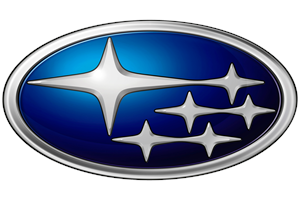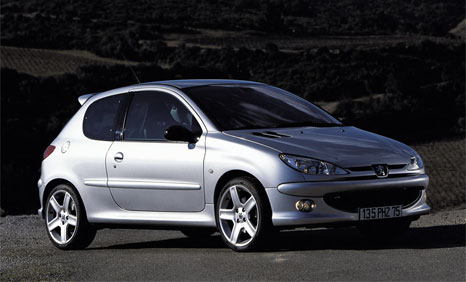


This edition of the Subaru Impreza WRX STI V1 - Classic JDM is the 5 speed / Manual version and was first brought out in 1994. This was at around the same time as the introduction of the 1995 McLaren F1 LM 6.1 V12 and the 1995 Ford GT 90 6.0L V12.This particular Subaru Impreza has a 1994cc Turbo Petrol powerplant with 4 cylinders in a F formation.
The Impreza shares its Petrol F4 engine configuration with the likes of the 2010 Subaru Impreza STI CS 400 - Cosworth - Hatch and the 2010 Subaru Impreza WRX STI R205 Spec C - Hatch. If you're looking for other fast cars which share the Impreza's All Wheel Drive, Saloon combination then how about the or the .
Weighing in at 1230 kgs (2711 lbs) this makes the Subaru Impreza WRX STI V1 - Classic JDM in the same weight category as the 2020 Audi A1 A1 Sportback 35 TFSI S tronic S line or the give or take 50kg.
![Mini Cooper John Cooper Works Cabrio 2.0 Turbo - [2022] image Mini Cooper John Cooper Works Cabrio 2.0 Turbo - [2022] image](/editionimages/2340.jpg)
The Subaru Impreza shares the same bhp with the 2022 Mini Cooper John Cooper Works Cabrio 2.0 Turbo (228 bhp)
In terms of power the 1994cc 16V F4 engine produces 247 bhp (184 kW) @ 6500 rpm similar to the 2022 Mini Cooper John Cooper Works Cabrio 2.0 Turbo (228 bhp) or the 2021 Ford Mustang Mach-E AWD (266 bhp).
The Turbo F4 throws out 228 lb-ft (309.1 Nm) @ 3500 rpm placing it with cars of similar torque performance figures such as the 2022 Mini Cooper John Cooper Works Cabrio 2.0 Turbo (236 lb-ft) or the 2020 McLaren Sabre 4.0 V8 Twin Turbo (206 lb-ft).
If one combines the weight with power or torque performance for the Subaru Impreza you can get a better idea of it's real world performance.
![Maserati Bora 4.9 V8 - [1974] image Maserati Bora 4.9 V8 - [1974] image](/editionimages/1917.jpg)
The 1974 Maserati Bora 4.9 V8 (225.7 bhp per ton) has similar Bhp Per Ton stats as the Subaru Impreza.
The Subaru Impreza has a Power to weight ratio of 200.8 bhp per ton and 185.3 lb-ft per ton. Bhp Per Ton figures of the 1994 Impreza competing with the 1974 Maserati Bora 4.9 V8 (225.7 bhp per ton) or the 1995 Caterham Super 7 1.4 Supersport (225.6 bhp per ton).
If you agree with the late great Carroll Shelby then arguably an even better indicator of potential performance, Torque. Use weight as well and you end up with - Torque per ton, with the Subaru Impreza generating around 185.3 lb-ft per ton. If you're curious as to what other cars have as much torque to weight then look no further than the 2003 Alfa-Romeo 156 2.4 JTD (210.3 lb-ft per ton) or the 2003 Porsche 911 GT3 RS 996 (210.3 lb-ft per ton).
With a 0-60mph time of 4.70 secs or a 0-100km/h (0-62mph) of 4.9 secs, this made the Subaru Impreza WRX STI V1 - Classic JDM as fast as the 2022 Mini Cooper Clubman John Cooper Works 2.0 Turbo ALL4 (4.70 secs) the 2020 BMW X4 M40d 3.0 Turbo (4.70 secs) the 2020 KIA Stinger GT 3.3 V6 Turbo AWD (4.70 secs) the or the 2020 KIA Stinger GT2 3.3 V6 Turbo (4.70 secs). This Subaru Impreza WRX STI V1 - Classic JDM is also faster than the 2021 Porsche Taycan 4 Cross Turismo (4.80 secs) the 2020 Audi TT S Turbo 50 TFSI (4.80 secs) the 2018 Rolls-Royce Cullinan 6.7 V12 Turbo (4.80 secs) the and the 2017 Dodge Charger Daytona 392 (4.80 secs).
When talking about the performance of the Subaru Impreza on the drag strip it can reach a quarter mile in an estimated 13.49 secs @ 101.4 mph. Similar performance down the quarter mile can be found with the the 2008 Chevrolet Cobalt SS 2.0 Turbo (13.43 secs), the 1999 Audi A6 S6 4.2 Quattro (13.44 secs), and the 2008 Mercedes SLK Class 350 Auto (13.45 secs).
Modern performance cars are often artificially restricted to 155mph. The 1994 version of the Subaru Impreza WRX STI V1 - Classic JDM has a maximum speed of 135mph.
If maxing out your car on the AutoBahn is your thing and you're wondering what's faster than the 1994 Subaru Impreza WRX STI V1 - Classic JDM then how about the 2020 Audi A1 Sportback 40 TFSI S tronic S line (146 mph), the 2018 Alfa-Romeo Giulia Q4 2.0L Turbo (146 mph), or the 2018 Alfa-Romeo Giulia Ti 2.0 Turbo (146 mph).









Peugeot 206 2.0 GTi 180
Engine: Naturally Aspirated Petrol | 1997cc 16v St4
Top Speed: 143 mph
0-60mph: 7.10 seconds

Porsche 911 Carrera 4 996
Engine: Naturally Aspirated Petrol | 3596cc 24v St6
Top Speed: 280.0 kph
0-100kph: 5.3 seconds



















